#henry murger
Explore tagged Tumblr posts
Text
How each of the 3 main couples fight according to Chapter 15 of Henry Murger’s “Scènes de la vie de bohème”:
Rodolphe VS Mimi:

“Sometimes it was Mimi and Rodolphe who, no longer having the strength to speak, explained themselves using whichever missiles they could get their hands on.”
Schaunard VS Phémie:

“More often than not it was Schaunard who addressed a few observations to the melancholic Phémie with the end of a walking stick.”
Marcel VS Musette:

“As for Marcel and Musette, their discussions were confined to the silence of privacy; they at least took care to close their doors and windows.”
#translated from french by Yours Truly#scènes de la vie de bohème#scenes of bohemian life#henri murger#henry murger#not exactly satisfied with the gifs themselves#but i would be lying if i said i didn't picture the fights from tomodachi life when i first read that line about mimi and rodolphe#raya makes yet again a very niche post
1 note
·
View note
Text
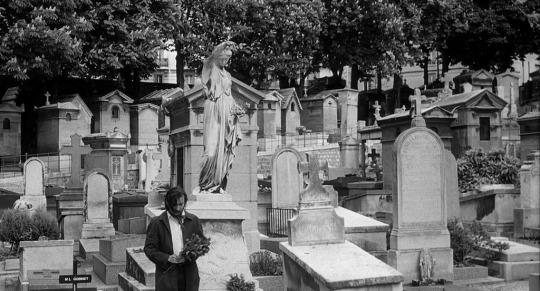
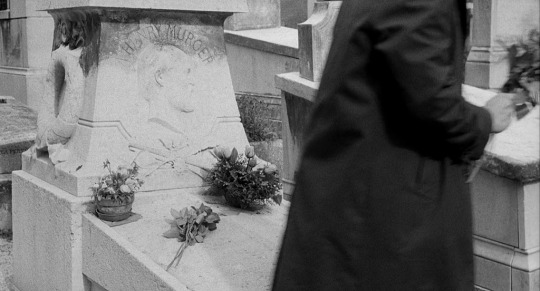
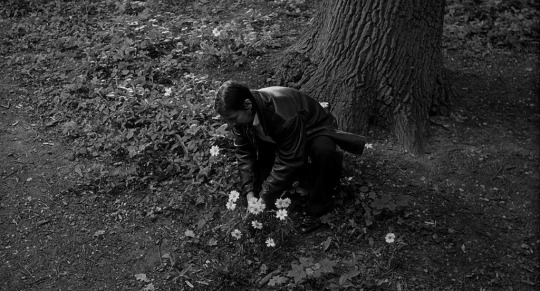

Aki Kaurismäki
- La Vie de Bohème
1992
#Aki Kaurismaki#Henri Murger#Aki Kaurismäki#La Vie de Bohème#La Vie de Boheme#The Bohemian Life#Boheemielämää#Boheemielamaa#Matti Pellonpää#Matti Pellonpaa#Cimetière de Montmartre#Montmartre Cemetery#flower#1992#finnish film
53 notes
·
View notes
Text
Leoncavallo: La Bohème, Act I - Mimì Pinson, la biondinetta - Rosina Storchio (1911)
On May 6th, 1897, Mahler was in attendance at the Teatro La Fenice, in Venice, to hear the world premiere of “La Bohème” opera by Ruggero Leoncavallo, since this title was programmed for the upcoming season of the Wiener Staatsoper. . Mahler was also present at La Fenice the preceding night to hear Puccini’s Bohème, which he had heard during its premiere one year earlier. Upon listening to both versions, he was convinced that Leoncavallo's work was clearly inferior to Puccini's. . Mahler strongly advised Wilhelm Jahn -- who still was director of the Wiener Staatsoper -- that Leoncavallo’s opera should not be performed in Vienna. But Jahn had excellent relations with the composer, so, in June, he signed a “more than modest” contract to produce Leoncavallo’s Bohème.
During Mahler’s time as the conductor of the Wiener Staatsoper, Leoncavallo's La Bohème had a total of 6 performances. Puccini's, which had its premiere in Vienna in 1903, had a total of 61.
On This Day: 6 May: Leoncavallo’s La Bohème Was Premiered.
That work premiered at the Teatro la Fenice in Venice on 6 May 1897, roughly one year after Puccini presented his setting at the Teatro Regio in Turin. Both librettos are based on the novel Scènes de la vie de bohème, originally published in serial form by Henri Murger in 1851, who subsequently turned these loose stories into a coherent play. A scholar writes, “there is some recent evidence to suggest that the scenario on which both operas are based was probably Leoncavallo’s.”
Since Puccini and Leoncavallo worked on their respective works at the same time, it was almost inevitable that a conflict of authorship would arise. Leoncavallo claimed that he had previously offered Puccini a completed libretto. As such, Leoncavallo claimed precedence over the subject. In addition, he asserted Puccini knew all along that he was working on the opera. Puccini responded to the accusation the following day in an open letter to Il corriere della sera, claiming that he had been working on his own version for some time, and felt that he could not oblige Leoncavallo by discontinuing the opera. He also “welcomed the prospect of competing with his rival and allowing the public to judge the winner.” A musicologist writes, “A mutual influence was certainly exercised by the assumption each composer made about his adversary’s libretto and musical style. The deletion of the ‘atto del cortile’ from Puccini’s opera may be seen as a direct consequence of his acquaintance with Leoncavallo’s libretto, whereas Leoncavallo, in the later version of his opera entitled Mimì Pinson, tried to adopt the inverse order of vocal roles, which by that time had been accepted by Puccini’s public.”
A comparison of both works reveals interesting dramatic and musical differences. Leoncavallo adhered closer to Murger’s novel, “disclosed by literary and musical quotations which permeate his libretto and score.” It has been suggested that Leoncavallo approached the work with the realism demanded from verismo opera. In Puccini’s opera it remains unclear, which of the four Bohemian friends is the musician, whereas Leoncavallo immediately identifies Schaunard as the composer. He performs his own composition; a cantata parody in Act 2, accompanying himself on the piano while the orchestra remains silent.
“For one moment the listener has the illusion of being at a party rather than at the opera.” In general, stage music plays a greater role as part of the action in Leoncavallo’s setting, as “he conceives this music as being part of an outside reality grafted onto his work.” And while Puccini balances the contrast between joyous and serious moments and their musical accompaniments in all four acts, Leoncavallo introduces a complete break at the beginning of Act 3. The first two acts are comic opera depicting Bohemian life, while acts 3 and 4 “unmask the carefree exuberance of the first two acts a main affect and unreal. The comedy is but a façade.”
We might also take a quick look at how Leoncavallo, compared to Puccini, deals with Mimi’s illness. For Puccini, Mimi is ill right from the beginning, and illness is an integral part of her personality. As listeners, we always have the suspicion that her illness is the primary reason why Rodolfo falls in love with her. To be sure, the sense of poverty in Mimi’s life is “not unconnected with her illness, but the dominating impression is of a fatality.” In Leoncavallo’s setting, Mimi falls ill during the action as the unmistakable result of her circumstances.
“With no money, she is prematurely discharged from the hospital, and her death is no more than the natural consequence of a medical system perverted by capitalism. Sorrow at her death is mingled with anger at the horrid conditions that caused it.” After the highly successful première of Leoncavallo’s La Bohème, both works coexisted for a decade but Leoncavallo’s work proved less attractive to a broader public. The “impact of Puccini’s musico-dramatic vision and the superiority of his musical invention eventually made history decide against Leoncavallo.”
#classical music#opera#music history#bel canto#composer#classical composer#aria#classical studies#maestro#chest voice#La bohème#Ruggero Leoncavallo#Rosina Storchio#lyric coloratura soprano#coloratura soprano#soprano#classical musician#classical musicians#classical history#opera history#history of music#historian of music#musician#musicians#diva#prima donna#Scènes de la vie de bohème#Henri Murger
10 notes
·
View notes
Text
youtube
Marcel meets Rodolfo
La Vie de Bohème, Aki Kaurismäki, 1992
The film is an adaptation of Henri Murger’s episodic semi-novel Scènes de la vie de bohème (1851), which is most famous for its operatic adaptation by Giacomo Puccini (1896).
#aki kaurismäki#la vie de bohème#the bohemian life#henri murger#giacomo puccini#scènes de la vie de bohème
0 notes
Text
Since I've been posting a little about zodiac signs, I thought I'd look up a few that are related to opera characters.
For example, both of the two famous operas set in Paris with a consumptive heroine, La Traviata and La Bohéme, which are both based on French books that were based in real life, with the author modeling the young male lover after himself.
Alexandre Dumas fils was a Leo. Henri Murger was an Aries. Do those signs seem right for La Traviata's Alfredo Germont and La Bohéme's Rodolfo, respectively?
Since Moulin Rouge! is basically La Traviata meets La Bohéme, and Christian is a cross between Alfredo and Rodolfo as a character, I wonder which of those signs might be his, if either? I'll guess Aries, because in general he's more like Rodolfo than Alfredo (Satine is obviously more Violetta than Mimí, though), and because Ewan McGregor is an Aries too.
Marie Duplessis, the real-life "Violetta," was a Capricorn. Does that seem fitting for Violetta?
(Meanwhile, staying in the realm of French authors who modeled young male lovers after themselves, I think we can safely say that Marius Pontmercy in Les Misérables is a Pisces, since Victor Hugo was one. Meanwhile, he subtly hints that Cosette was born on the day of the Battle of Waterloo, which would make her a Gemini. And if I remember correctly, Éponine also implies that her birthday is in June at one point, so she's probably a Gemini too, reinforcing that she and Cosette are "two sides of the same coin.")
#zodiac signs#opera#la traviata#la boheme#les miserables#french authors#fictional characters#astrology
2 notes
·
View notes
Text
Lillian Gish at MGM

John Gilbert and Lillian Gish in La Bohème (King Vidor, 1926)
La Bohème (King Vidor, 1926)
Cast: Lillian Gish, John Gilbert, Renée Adorée, George Hassell, Roy D'Arcy, Edward Everett Horton, Karl Dane, Mathilde Comont, Gino Corrado, Eugene Pouyet. Screenplay: Frédérique De Grésac; titles: William M. Conselman, Ruth Cummings; based on a novel by Henri Murger and an opera libretto by Luigi Illica and Giuseppe Giacosa. Cinematography: Henrik Sartov. Art direction: Cedric Gibbons, A. Arnold Gillespie. Costume design: Erté. Film editing: Hugh Wynn.
Bohème without Puccini, except for a few themes from the opera interpolated into the piano accompaniment for some contemporary prints. The screenplay by Frédérique (billed as Fred) De Grésac is said to be "suggested by Life in the Latin Quarter" by Henri Murger, which is also the source of the opera libretto by Luigi Illica and Giuseppe Giacosa. But the librettists took liberties with Murger, combining several characters and incidents, that are copied in the movie, so it's pretty clear that De Grésac paid at least as much attention to the opera as he did to Murger. It's very much a vehicle for Lillian Gish, making her debut at MGM. She wanted John Gilbert to play Rodolphe to her Mimi, but sometimes seems to be playing an anything-you-can-do-I-can-do-better game with her co-star. There is, for example, a scene in which Gilbert acts out the proposed ending to the play he is writing, with much swashbuckling. Then, a few scenes later, Gish acts it out again with similar verve for a potential backer for the play. Their courtship is a surprisingly hyperactive one, particularly in the scene in which they and their fellow bohemians go on a picnic that involves much running about. And Gish is not content to die calmly: On hearing that she won't live through the night, she makes a mad dash across Paris to be reunited with her lover, at one point allowing herself to be dragged along the streets while hanging onto the back of a horse-cart. Gilbert poses with feet apart and arms akimbo much too often, and the starving bohemians are given to much dashing and dancing. (Among them is the endearing and enduring Edward Everett Horton as Colline.) It's all a bit too much, and I have a feeling that the print I saw shown at the wrong speed, giving it that herky-jerky quality we used to attribute to silent films before experts corrected the speed at which they should be projected. The costumes are by the celebrated designer Erté, who is said to have had so much trouble working with Gish that he gave up designing for Hollywood.
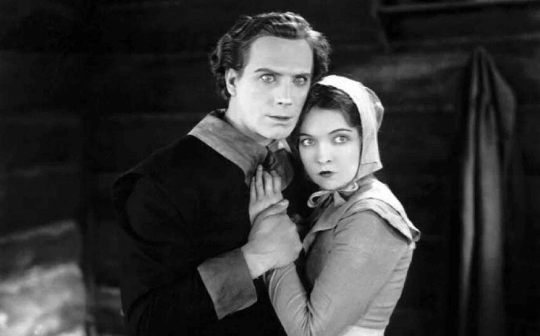
Lars Hanson and Lillian Gish in The Scarlet Letter (Victor Sjöström, 1926)
The Scarlet Letter (Victor Sjöström, 1926)
Cast: Lillian Gish, Lars Hanson, Henry B. Walthall, Karl Dane, William H. Tooker, Marcelle Corday, Fred Herzog, Jules Cowles, Mary Hawes, Joyce Coad, James A. Marcus. Screenplay: Frances Marion, based on a novel by Nathaniel Hawthorne. Cinematography: Henrik Sartov. Art direction: Cedric Gibbons, Sidney Ullman. Film editing: Hugh Wynn.
I'm pretty sure that any high school students who think they can get by watching Frances Marion's adaptation of Nathaniel Hawthorne's The Scarlet Letter instead of reading it are likely to be disappointed in English class. That said, no film version is going to reproduce the depth of characterization, the symbolic force, or the intellectual density of Hawthorne, so we should be grateful for what this one does give us: one of Lillian Gish's greatest performances. This was Gish's second film for MGM, after La Bohème, and it suggests that her talents were better suited to a contemplative director like Victor Sjöström -- or Seastrom, as MGM insisted on anglicizing his name -- than to King Vidor's more action-oriented style. If her Mimi in La Bohème was disturbingly hyperactive, her Hester Prynne is a marvel of understated acting. She uses her eyes and mouth and the tilt of her chin to convey a miraculous range of emotions, from stubbornness to fear, from strength to frailty. It's a pity that her Dimmesdale, Lars Hanson, doesn't match her in subtlety. He's more successful in this regard in their 1928 collaboration The Wind, which was also directed by Sjöström.
5 notes
·
View notes
Text
The term "starving artist" refers to a popular archetype and cultural stereotype describing an artist who sacrifices financial stability, often living in poverty, in order to pursue their creative work and artistic vision. The concept of the "starving artist" is rooted in the romantic ideal that true art requires dedication, passion, and personal sacrifice. For many, it represents the notion that artists may struggle financially while they are alive, only to gain recognition and value for their work posthumously.
Origins and Historical Context
The idea of the starving artist dates back to at least the Renaissance and Romantic periods, when artists, writers, and poets were often idealized as suffering geniuses. These artists were often at odds with the mainstream or commercial tastes of their time, refusing to "sell out" by creating work purely for profit. The term became popularized through literature, stories, and even the real lives of certain artists, such as Vincent van Gogh, who lived in poverty despite producing highly influential works that are now valued at millions of dollars.
In the 19th century, the "starving artist" concept was solidified in the popular imagination by works such as La Bohème by Puccini and Scènes de la vie de bohème by Henri Murger, which depicted the struggles of impoverished, bohemian artists living in Paris. These stories portrayed artists as living in rundown apartments, wearing ragged clothing, and surviving on meager food rations—all for the sake of their art.
Characteristics of the "Starving Artist" Archetype
The starving artist archetype includes several key characteristics:
1. Financial Struggle: The most defining feature of the starving artist is their lack of financial success. This is often due to an unwillingness to conform to commercial demands or popular trends in favor of pursuing personal expression and innovation.
2. Passion Over Profit: Starving artists are seen as placing their passion for creating art above the need for financial security. They may reject the notion of "selling out" by prioritizing artistic integrity and originality over commercial appeal.
3. Social Isolation or Marginalization: Many starving artists are portrayed as misunderstood or isolated, living on the fringes of society, struggling to find people who appreciate or understand their work. Their art may challenge societal norms, making it difficult for them to find an audience.
4. Romanticism of Suffering: The idea of the starving artist often romanticizes suffering, implying that struggle and hardship somehow enhance an artist's creativity or authenticity. This perspective suggests that financial stability could stifle creativity or that "true" art comes from pain.
5. Posthumous Recognition: In many cases, the starving artist only achieves recognition and acclaim after their death. The stereotype implies that society often fails to appreciate or value creative talent until it is too late, with the artist’s work gaining fame and financial worth posthumously.
6. Bohemian Lifestyle: The starving artist archetype is associated with a bohemian lifestyle—an unconventional, free-spirited way of living, often marked by frugality, minimalism, and a disregard for traditional values or material wealth.
Famous Examples of "Starving Artists"
Several famous artists in history have become symbols of the starving artist archetype, such as:
Vincent van Gogh: Perhaps the most famous starving artist, van Gogh lived in poverty and struggled with mental health issues. Despite creating some of the most iconic works in Western art, he only sold a few pieces during his lifetime and died penniless.
Franz Kafka: The writer Kafka, whose works were largely unpublished during his life, struggled to gain recognition and requested that his writings be destroyed after his death. His work only gained widespread acclaim posthumously.
Modigliani: The Italian painter and sculptor Amedeo Modigliani lived a life of poverty and illness. He struggled financially throughout his life and only became celebrated for his distinct style of elongated portraits after his death.
Emily Dickinson: The reclusive American poet lived a modest life and had only a handful of her poems published during her lifetime. After her death, her work was discovered and she became recognized as one of the greatest American poets.
Henri de Toulouse-Lautrec: The French painter who documented the bohemian lifestyle of Paris’s Montmartre district struggled with alcoholism and ill health. Although popular within certain circles, he lived a challenging life and is often associated with the "starving artist" lifestyle.
The Impact of the "Starving Artist" Myth
The starving artist myth has had both positive and negative effects on the perception of artists and the art world.
Positive Impact
Romantic Appeal: The starving artist archetype adds a romantic allure to the world of art, portraying artists as passionate individuals driven by a higher purpose.
Emphasis on Authenticity: The stereotype emphasizes artistic integrity, suggesting that true art cannot be compromised by commercial success or material gain.
Inspiration for Aspiring Artists: Some aspiring artists find solace and inspiration in the idea that they are following in the footsteps of iconic figures who also struggled for their art.
Negative Impact
Financial Hardship: The notion that "real" artists must struggle financially can discourage artists from seeking fair compensation for their work or lead them to accept exploitative working conditions.
0 notes
Text
La vie de bohème

Adaptación a cargo de Aki Kaurismäki de la novela “Escenas de la vida bohemia”, de Henri Murger, en la que se basó la ópera “La Bohème”. En francés y en blanco y negro, aunque con muchos de sus actores habituales y con una sorprendente actuación musical, el universo del director pierde casi todo su encanto y acaba resultando un muy aburrido ejercicio de estilo.
Filmaffinity
0 notes
Text
youtube
In the novel this is based on, The Bohemians of The Latin Quarter by Henri Murger, Rodolfo writes a newsletter called the 'Scarf of Iris'. In this scene he and his best friend Marcello, the painter, decide to use a steamy love scene in his manuscripts for warmth and to fuel the slow burning fire. They have fun with the poetic metaphor of that in the libretto.
ACT ONE A garret (A large window through which an expanse of snow- covered roofs is seen. At right, a stove. A table, a bed, four chairs, a painter's easel with a half-finished canvas: books everywhere, manuscripts. Rodolfo is thoughtful, looking out the window. Marcello works at his painting "The Crossing of the Red Sea", his hands stiff with cold; he tries to warm them by blowing on them now and again.) MARCELLO This Red Sea of mine makes me feel cold and numb as if it were pouring over me. I'll drown a Pharaoh in revenge. (to Rodolfo) What are you doing? RODOLFO I'm looking at Paris, seeing the skies grey with smoke from a thousand chimneys, and I think of that no-good, hateful stove of ours that lives a gentleman's life of idleness.
MARCELLO It's been a long time since he received his just income. RODOLFO What are those stupid forests doing, all covered with snow? MARCELLO Rodolfo, I want to tell you a profound thought I've had: I'm cold as hell. RODOLFO As for me, Marcello, I'll be frank: I'm not exactly sweating. MARCELLO And my fingers are frozen - as if I still were holding them in that enormous glacier, Musetta's heart. (A sigh escapes him, and he leaves off painting.) RODOLFO Love is a stove that burns too much... MARCELLO Too fast. RODOLFO Where the man is the fuel...
MARCELLO And woman the spark... RODOLFO He burns in a moment... MARCELLO And she stands by, watching! RODOLFO Meanwhile, we're freezing in here! MARCELLO And dying from lack of food! RODOLFO We must have a fire... MARCELLO (seizing a chair) Wait...we'll sacrifice the chair! (Rodolfo keeps Marcello from breaking the chair. Suddenly he shouts with joy.) RODOLFO Eureka! MARCELLO You've found it? RODOLFO Yes. Sharpen your wits. Let Thought burst into flame. MARCELLO (pointing to his picture) Shall we burn the Red Sea?
RODOLFO No. Painted canvas smells. My play... My burning drama will warm us. MARCELLO You mean to read it? I'll freeze. RODOLFO No, the paper will unfold in ash and genius soar back to its heaven. A serious loss to the age... Rome is in danger... MARCELLO What a noble heart! RODOLFO Here, take the first act! MARCELLO Here. RODOLFO Tear it up. MARCELLO Light it. (Rodolfo lights the part of the manuscript thrown in the fire. Then the two friends draw up chairs and sit down, voluptuously warming themselves.)
RODOLFO and MARCELLO What blissful heat! (The door opens and Colline enters, frozen, stamping his feet. He throws some books on the table.) COLLINE Signs of the Apocalypse begin to appear. No pawning allowed on Christmas Eve. (surprised) A fire! RODOLFO Quiet, my play's being given... MARCELLO ...to the stove. COLLINE I find it sparkling. RODOLFO Brilliant. MARCELLO But brief. RODOLFO Brevity, its great merit. COLLINE Your chair, please, Mr Author.
MARCELLO These intermissions bore you to death. Get on with it! RODOLFO Act Two. MARCELLO No whispering. COLLINE What profundity! MARCELLO How colourful! RODOLFO In that dying blue flame an ardent love-scene dies. COLLINE See that page crackle. MARCELLO There were the kisses! RODOLFO I want to hear three acts at once. (He throws the rest of the manuscript on the fire.) COLLINE And so unified is your bold conception.
ALL Beautiful death in the joyful flame. (The flame dies.) MARCELLO Oh Lord! The flame is dying. COLLINE So useless, so fragile a drama! MARCELLO Already curling up to die.
0 notes
Text


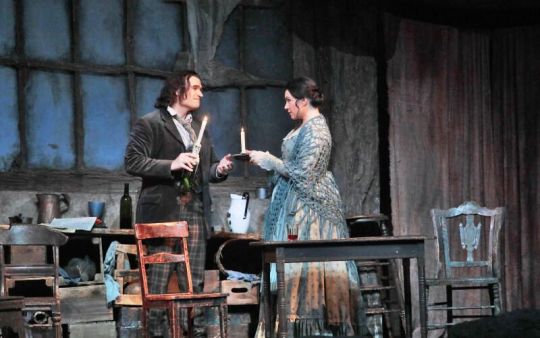
#ElEscenarioDelMundo #ProyeccionDeVida
🎬 “LA BOHÈME”
🔎 Género: Ópera / Música
⏰ Duración: 135 minutos
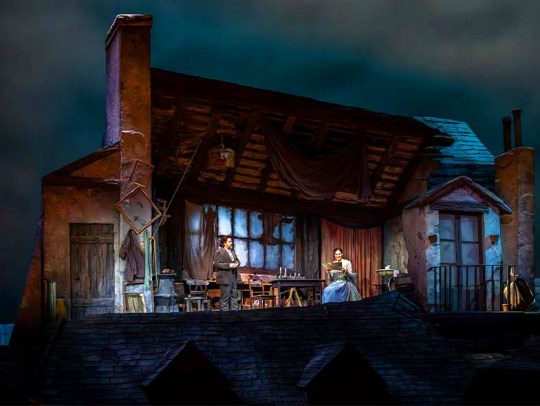
✍️ Guión: Giuseppe Giacosa y Luigi Illica
📕 Escenas de la Vida Bohemia de Henry Murger
🎼 Música: Giacomo Puccini (1858–1924)
💥 Ópera en cuatro actos que nos sitúa en París (1830). No se trata de un escenario aleatorio, sino que más bien refleja los problemas y preocupaciones de una época particular en la que, tras los trastornos de la revolución y la guerra, los artistas franceses habían perdido su base de apoyo tradicional de la aristocracia y iglesia. La historia se centra en una juventud consciente de sí misma y en desacuerdo con la sociedad en general: un ambiente bohemio que es claramente reconocible en cualquier centro urbano moderno. La Bohème captura este espíritu en sus primeros días.

🗯 Apasionada, eterna e indeleble historia de amor entre jóvenes artistas de París, puede reclamar su título como la ópera más popular del mundo. Tiene una capacidad maravillosa para causar una primera impresión poderosa y revelar tesoros insospechados después de decenas de audiencias. A primera vista, La Bohème es la descripción definitiva de las alegrías y tristezas del amor y la pérdida; Si se examina más de cerca, se revela el profundo significado emocional escondido en las cosas triviales (un sombrero, un abrigo viejo, un encuentro casual con un vecino) que conforman nuestra vida cotidiana.

👥 Reparto: Sonya Yoncheva (soprano - Mimì), Michael Fabiano (tenor - Rodolfo), Susanna Phillips (soprano - Musetta), Lucas Meachem (barítono - Marcello), Alexey Lavrov (barítono - Schaunard), Matthew Rose (Colline), Paul Plishka (Benoit / Alcindoro), Gregory Warren (tenor - Parpignol) y The Metropolitan Opera Orchestra & Chorus.
📢 Dirección: Marco Armiliato (Italia)
© Producción: Franco Zeffirelli y Metropolitan Opera de Nueva York
🌎 País: Italia
📅 Año: 2018
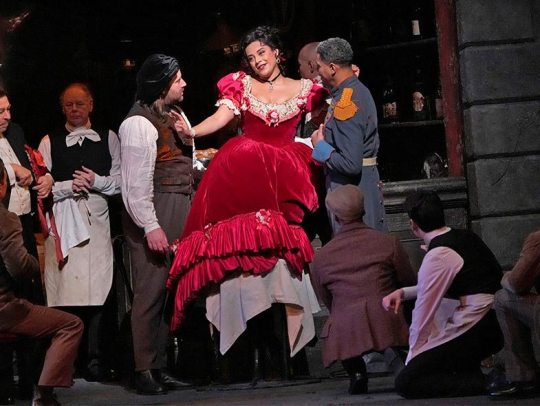
📽 PROYECCIÓN:
📆 Sábado 17 de Agosto
🕛 12:00m.
🏪 Movie Time Basadre (calle Palmeras 343, Urbanización Orrantia - San Isidro)
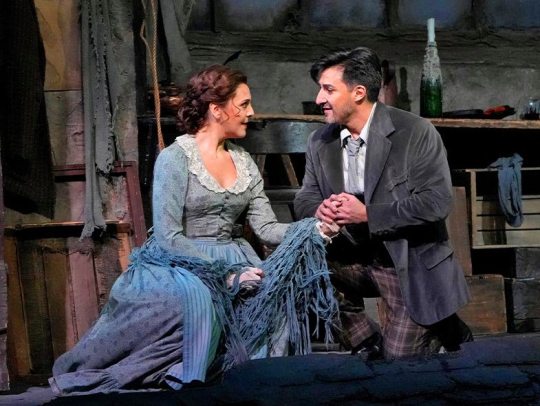
🎯 Entradas:
🎫 Adultos, Niños y Jubilados: S/.75
🖱 Reservas: https://movietime.com.pe/peliculas/2856
0 notes
Text
0 notes
Text
Cem Yılmaz Budan – Türk Edebiyatında Bohem (2023)
Hemen herkesin aşina olduğu ancak tanımlamaya gelince zorlanılabilecek bir kavram olan bohemin ilk karşılığının “derbeder” olması belki de ilk ipucudur. Paris merkezli ilk bohem sanat toplulukları içinde yer alan Henry Murger, Nerval, Gautier, Baudelaire ve Rimbaud gibi sanatkârlar, tarihsel anlamda 20. yüzyılın ikinci yarısından günümüze farklı coğrafyalarda muhtelif muadiller üretmiş, bu…

View On WordPress
0 notes
Text
In 1851, the novelist Henri Murger published his Scenes of Bohemian Life, a set of interlocked stories that crystallised an ideal of bohemian life. As the exhibition’s curator, Russell Ferguson, writes in an indispensable accompanying book: “What it represented above all was a refusal and disdain for societal conventions; an embrace of alcohol and drugs; sexual freedom; the pursuit of art, music and dance, and poetry; and a willingness to accept a sometimes brutal poverty as the price of these liberties.”
0 notes
Photo

#La Vie de bohème#Boheemielämää#Aki Kaurismäki#Aki Kaurismaki#Scènes de la vie de bohème#Henri Murger#Timo Salminen#1992#1992 film#Das Leben der Bohème#drama#black and white#fish#finnish director#La Vie de Boheme#Kaurismaki
22 notes
·
View notes
Photo

Almond Blossom, 1890, by Vincent van Gogh (1853-1890)
The Starving Artist
Recently I read a book called ‘How to Sell Your Art Online,’ by Cory Huff. It hooked me as Huff began by questioning the “starving artist” myth and explaining how it originated. It made me realise how I wanted to more deeply research it, as it has been a popular belief for much longer than I had thought. This tale of the starving artist - poor in material wealth but rich in conviction - is still prevalent today. As an art student myself, I have confronted others’ judgement on the creative field.
The starving artist is a trope that portrays the creative person - musicians, writers, visual artists, etc. - as a person that sacrifices any material wealth or resources for the more “bohemian” lifestyle of poverty and financial instability - voluntary or otherwise. While this subculture existed for centuries, one of the men to truly popularize this view on the creative lifestyle was French novelist Henri Murger (1822-1861). Murger published ‘Scènes de la vie de bohème,’ a romanticization of poverty. This collection of stories painted the lack of wealth and resources as playful and passionate. It portrayed this way of life as above that of the wealthy, or even the royal. Even though the mainstream regarded them as uncivilized, these artists were noble and nothing less. On another note, Murger died destitute at the age of 38.
To give Murger some credit, however, he stressed that this way of life was only supposed to be temporary, a kind of transitional period as the artist paved their way to success. He also categorized these Bohemian artists into more specific situations. He stressed that:
“Bohemia is a stage in artistic life; it is the preface of the Academy, the Hotel Dieu, or the Morgue.”
Once a common term for an ethnic group, Murger translated “bohemian” as an artistic term. However while the mainstream picked up the Bohemian myth, Murger’s warnings unfortunately went unnoticed. This view of the Bohemian artist grew and was eventually adopted as truth.
Today the struggling artist stigma continues. Many often bring up the life of Vincent van Gogh, taunting artists with a life of misery in order to prove their worth and conveniently forgetting the many artists that were successful, and didn’t become a romanticized story of mental illness. The myth has pushed many out of creative fields as the thought that anything remotely creative must be unworthy. This stigma is also often used as justification for not compensating artists. While I can’t compare every contemporary artist to Matisse or Picasso, there is a stage where we must be professional and embrace the gift of communication, information, and marketing in order to elevate our status as artists.
#art#art history#the starving artist#information#history#art history blog#quote#How to Sell Your Art Online#Cory Huff#Scènes de la vie de bohème#Henri Murger#bohemian#artist#vincent van gogh#van gogh#creative#create
602 notes
·
View notes
